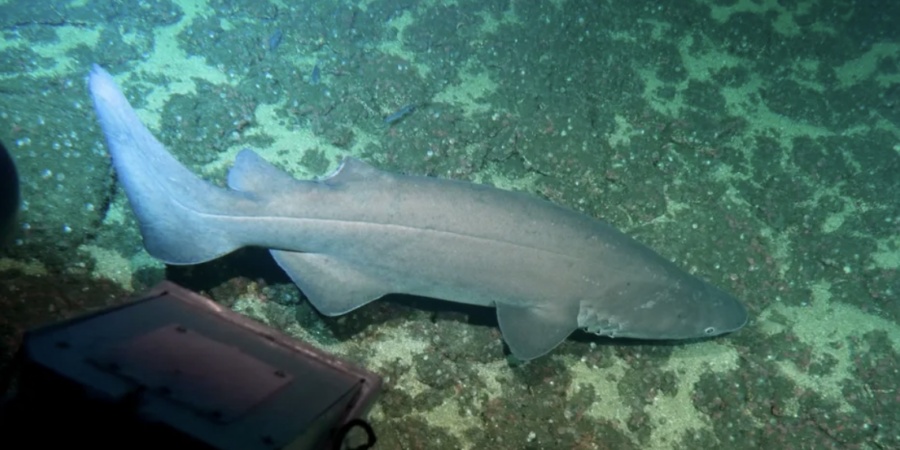In May 2022, during a submarine expedition to the Cordillera de Coiba seamounts in Pacific Panama, a remarkable discovery unfolded: the sighting of twelve prickly sharks (Echinorhinus cookei), a rare bottom-dwelling species. This marked the first documented living evidence of the species in Panama’s eastern Pacific region. The findings were recently described in the Journal of Fish Biology.
E. cookei is a slow-moving shark with numerous, thorn-like denticles on its body. It typically lives at depths between 11 and 580 meters. Encounters at the Cordillera de Coiba Marine Protected Area were reported in two separate locations, with most sightings occurring around the Kevan Mantell seamount, at depths ranging from 151 to 350 meters.
Observations of the prickly shark are so infrequent that the International Union for the Conservation of Nature (IUCN) classifies it as data deficient, indicating a lack of adequate information to assess its risk of extinction. However, species categorized as data deficient have been recently questioned and are assumed to be at least threatened. This makes the sighting of the twelve specimens in Panama even more extraordinary.
Understanding more about where the prickly shark lives and how it behaves is crucial for successfully conserving and managing the species, especially considering the ongoing threats from fishing activities, as seen in the frequent sightings of the species reported as bycatch in the region.
“The sighting of the rare prickly shark aggregating on Panama’s seamounts is a momentous find, of unique ecological significance, an observation that not only deepens our understanding of shark behavior but also underscores the importance of protecting such unique habitats for future conservation efforts of this species,” said Stefanie Kaiser, co-author from the Senckenberg Research Institute and Natural History Museum.
The observation of multiple prickly sharks in the underwater mountain range also reinforces the importance of seamounts as biodiversity hotspots and the need for improved protection of the Cordillera de Coiba Marine Protected Area from illegal human activities.
“Some of the best ways to reinforce the protection of the Marine Protected Area is by keeping the satellite monitoring program of fishing vessels in the area operational 24/7,” said lead author Héctor Guzmán, from the Smithsonian Tropical Research Institute. “For example, on September 2023, the Ministry of the Environment with the support of a vessel from the NGO Marine Protection Alliance captured an illegal fishing boat from Colombia inside the Cordillera de Coiba with sharks and turtles onboard.”
The first scientific exploration mission to the Cordillera de Coiba seamounts was made possible thanks to funding from the Smithsonian Tropical Research Institute (STRI), the Collatos Family Foundation, the Hothem family, Re:wild, the Wyss Foundation, Mission Blue, and the Secretaria Nacional de Ciencia y Tecnología de Panama (SENACYT).
The Smithsonian Tropical Research Institute, headquartered in Panama City, Panama, is a unit of the Smithsonian Institution. The institute furthers the understanding of tropical biodiversity and its importance to human welfare, trains students to conduct research in the tropics and promotes conservation by increasing public awareness of the beauty and importance of tropical ecosystems.
